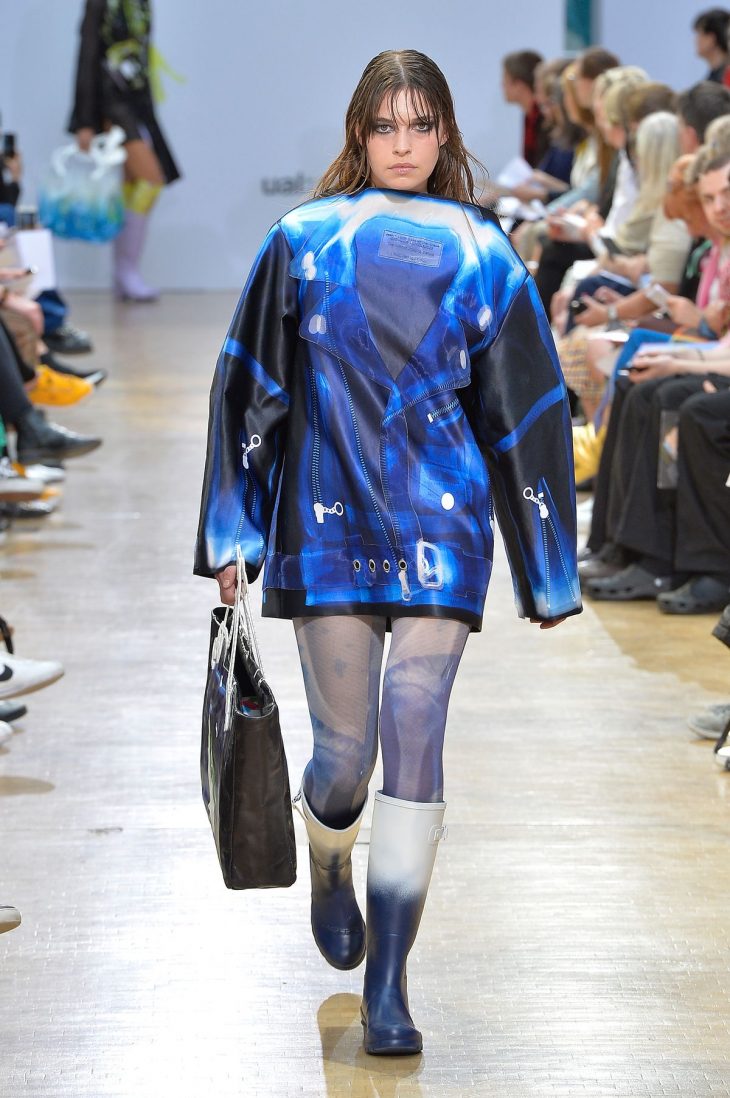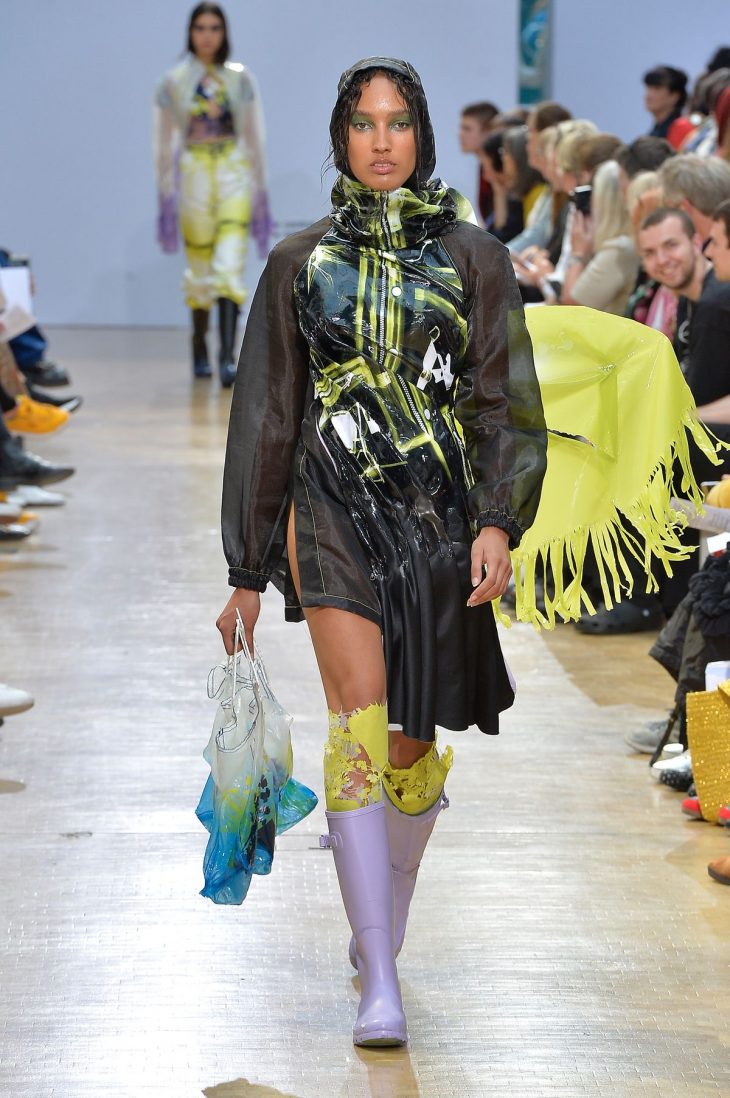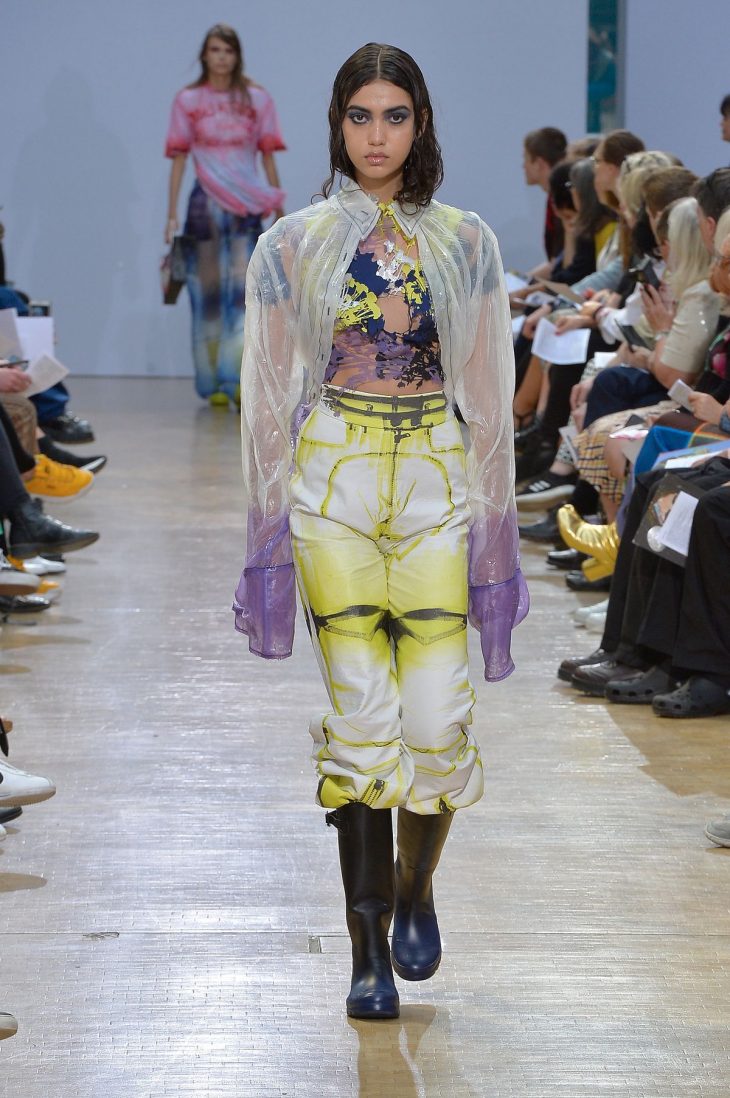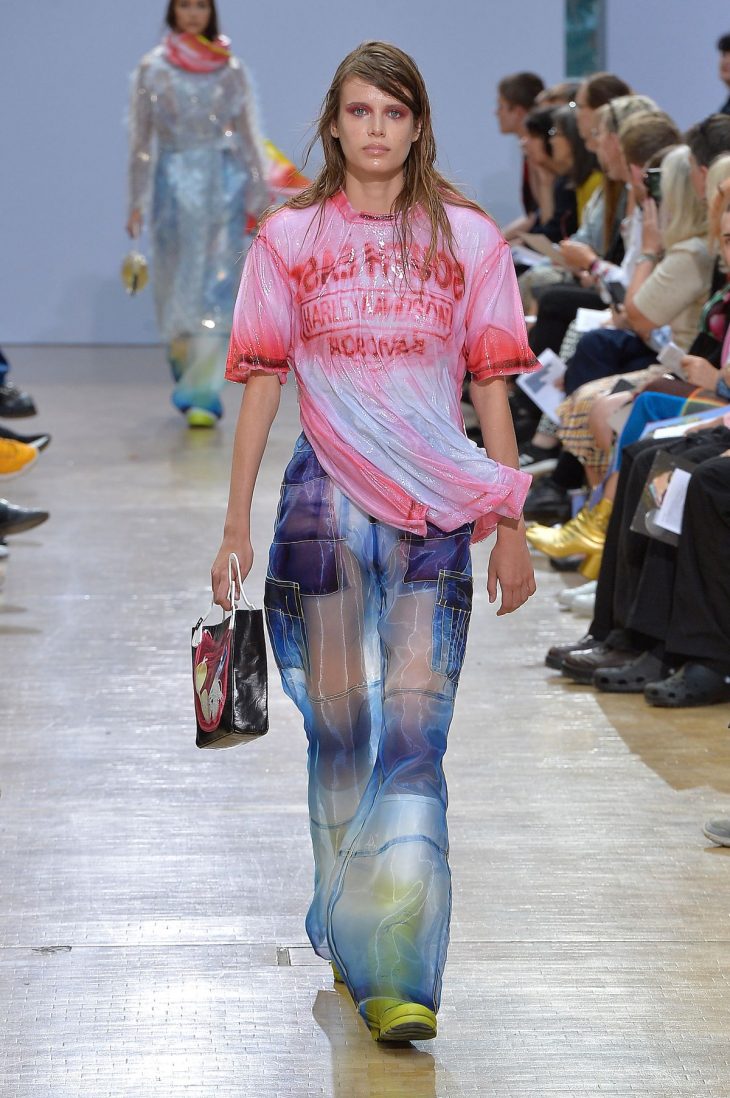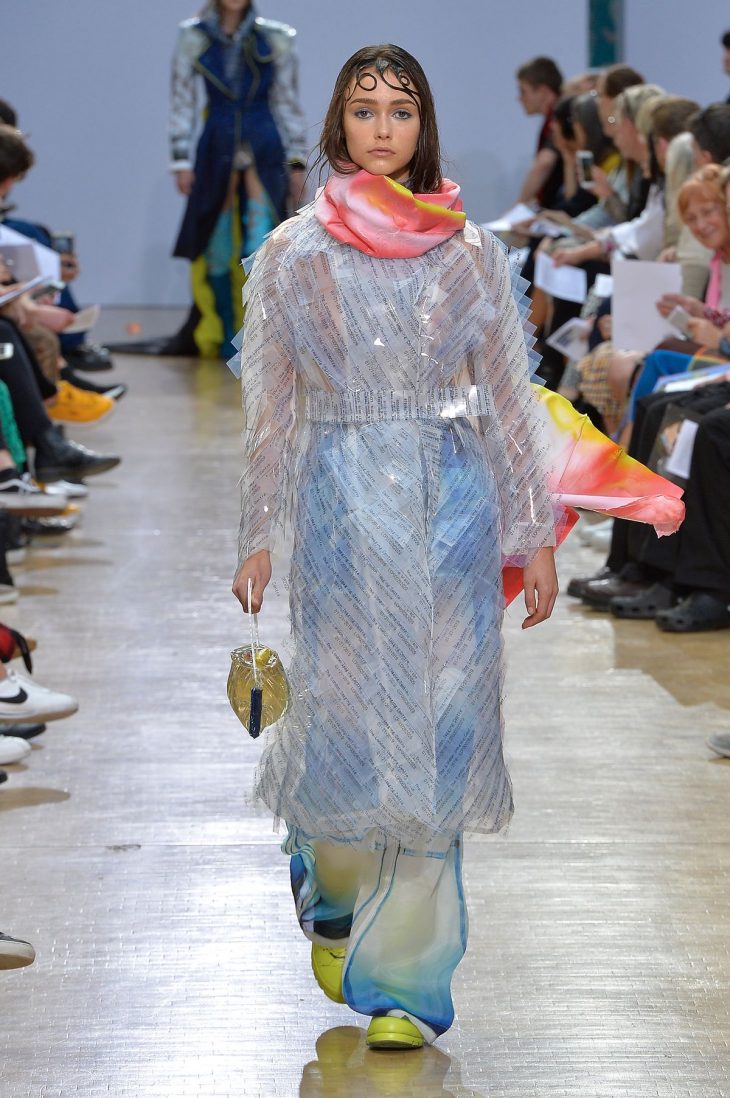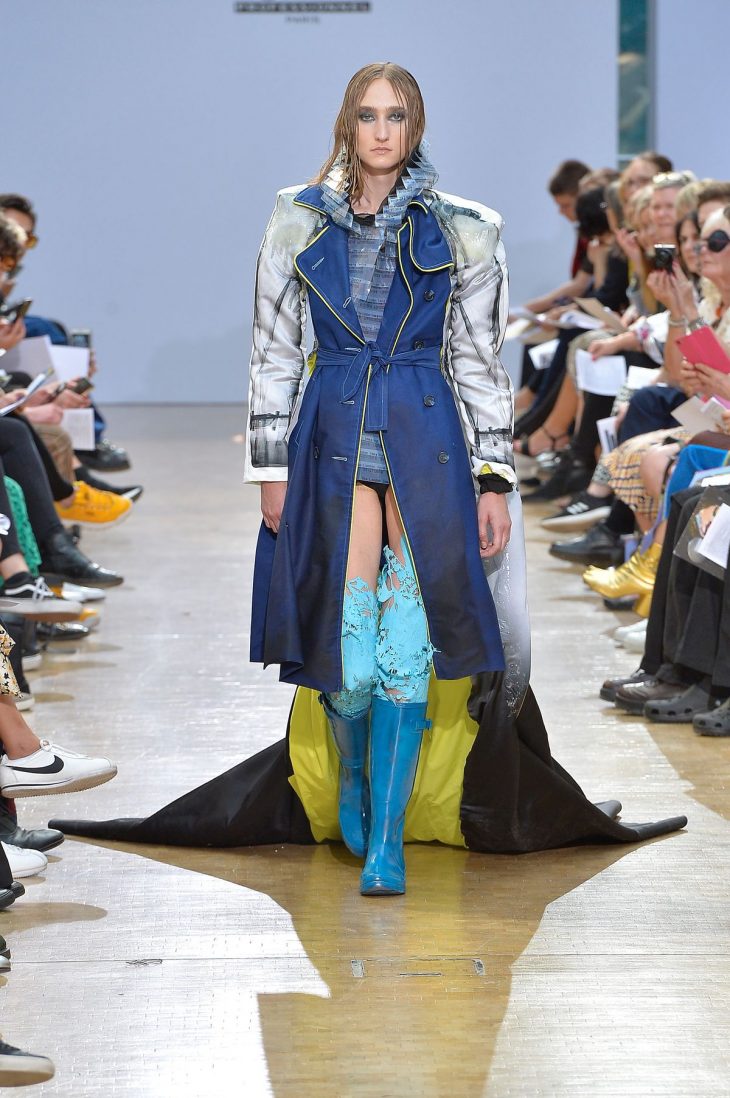#Behind The Scenes
MODELS1 50TH SCHOLARSHIP 2019
In October of 2018, Models1 celebrated fifty years in the industry in a way that only the UK’s most established agency could. Our long history of scouting and uplifting the best models in British fashion also comes with a love for the designers and creative minds that keep London at the forefront of style, media and culture. Looking ahead to the future, M1 partnered with Central Saint Martins to create a scholarship titled the “Models 1 50th Scholarship for BA Fashion.” This years recipient is British talent, Grace Jean-Louis Constantine.
We recognise the climate that our young talents are developing within and aim to create opportunities that ease the stress that comes with following their dreams in a bustling city such as London. In addition to the financial support given, Models 1 also provided the winning designer with six professional models to walk in their final show and a model for their final year collection look-book.
“On behalf of Central Saint Martins, I would like to thank Models 1 for sharing our vision to provide fashion designers with an outstanding education. The Models 1 50th Scholarships for BA Fashion will give designers the opportunity to develop new skills and realise their creative potential. We are delighted to celebrate Models 1 50th Anniversary and look forward to developing this partnership in the years to come,” said Sarah Gresty, the Course Leader of the BA in Fashion at Central Saint Martins.
Today, we hear from our recipient Grace on her passion behind her final collection and her thoughts on the future of fashion.
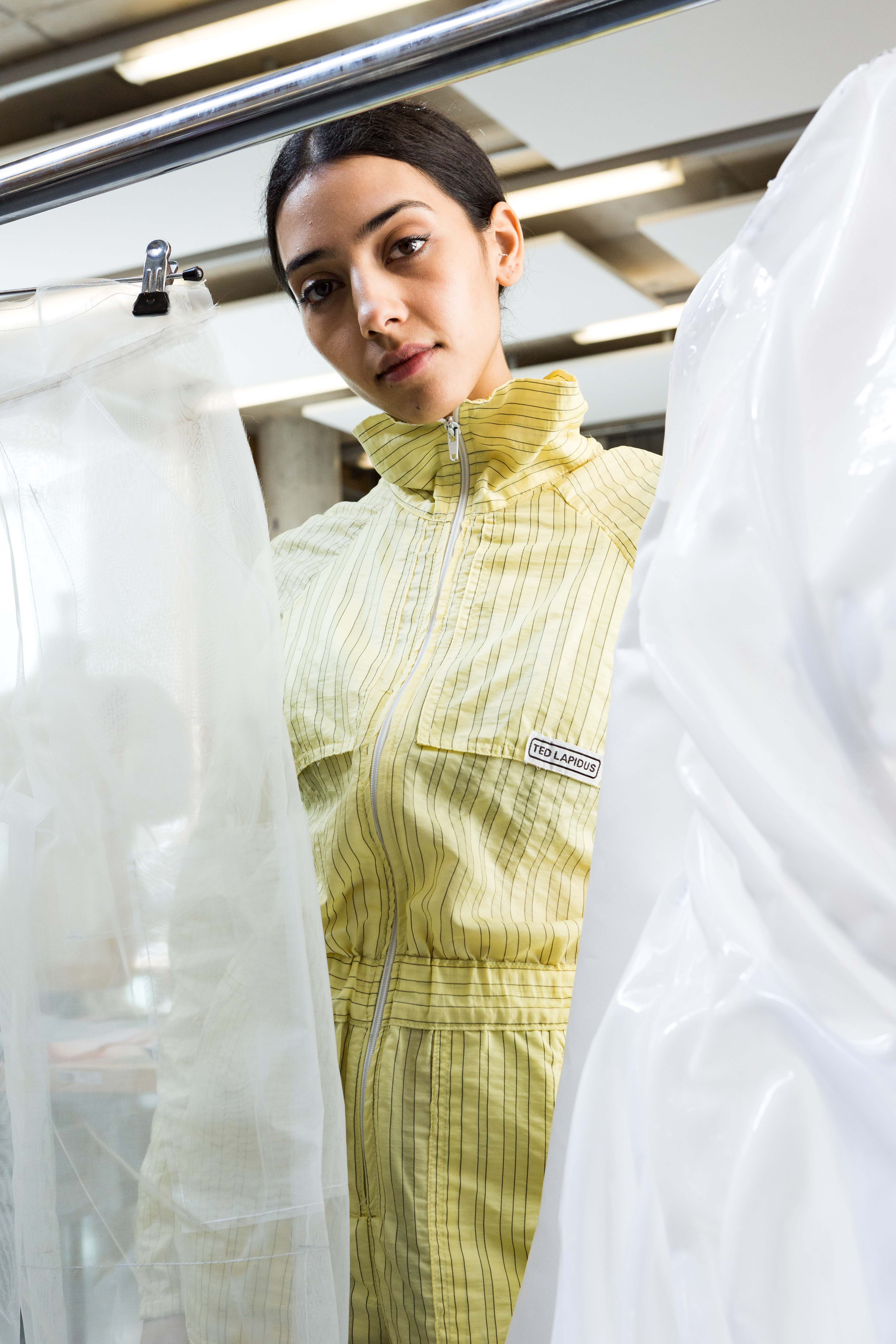
M1: As our very first recipient, what does receiving the Models1 50th scholarship mean for you and how will it impact your approach to your collection?
GC: Receiving the scholarship is really great, especially being able to work with an agency like Models1. It will allow me to cast models that I feel will really reflect the themes and concepts that were included in the design process. The financial aid also means that I won’t have to compromise on any of my design ideas or choices and that means a lot moving forward, being able to complete my vision any way I want to.
M1: What’s the inspiration behind your collection?
GC: Well the collection is about me and my mum and generally relationships between you and your mother. It’s the idea of being protected and having a loving/caring relationship and how that can help you weather the storm. That ended up coming out in quite a literal way – this idea of what garments look like in the eye of the storm and particularly in a time my life where that protective relationship was reversed and I became the caregiver in the relationship.
M1: What’s been the biggest challenge so far in bringing that vision to life?
GC: I really like to make my own imagery and that was the biggest thing for me – how to do that in an effective way and in authentic way. If I have this idea of making something look fragile in an x-ray for example, how can I realistically get an x-ray of a garment? I had to phone up lots of hospitals and ask them to let me take x-rays of clothes and objects. In the end I think it was the persistence of if you have an idea of how you want it to look and how you’re going to achieve that. Even getting the shape of these blown garments – how can you get pictures of that? I got a leaf blower and I blew some garments on the poor model but it worked in the end. I think it’s the persistence of knowing what you want and visually achieving that.
M1: You’ve shown really out of the box thinking, is that something that you feel you’ve always had or been brought out through your time at CSM?
GC: Oh, definitely CSM! I was here from my foundation year and that thinking was encouraged even from then. It’s all about how you can think about something in a different/ alternative way. I think it’s also the facilities that are available; that’s it not just fashion for what I’m doing in particular with this project. I’m using the casting workshop and the painting techniques workshop and that out of the box way of thinking is encouraged by the fact that they don’t want you to be limited to your department and what you would usually use for that. CSM is really great for that.
M1: It sounds like its been a long road so far; what’s been your motivating factor in seeing this project through to the end?
GC: You have this goal of creating your final collection and you’ve been thinking about it for four years (five if you’ve done foundation). This year is about achieving that goal and you do what you need to do to get it done. All-nighters or whatever it may be. You’re around everyone else as well so you’re encouraging each other and pushing each other.
M1: When did you know that design was your passion?
GC: At the risk of sounding like an X-factor contestant, probably when I was very young. I would do strange little drawings and call them “Graces Garments”. In sixth form when I was doing my A-levels, I decided to do design A-levels and then coming to do foundation here, there was a diagnostics course so I tried all of the different kind of art practices and then I picked half way through to do fashion and it became quite clear to me when I visually imagine a print of sculpture I always imagined it on a body so it made sense for me to do fashion.
M1: You put so much of yourself, time and effort into creating a garment – when you finally see the finished product, what does that give back to you?
GC: I mean it’s definitely a sense of achievement and also you sometimes look at it and think “what could I do better” but it’s always a sense of achievement and it’s great to get feedback from people around you and hear the opinion of your tutors.
M1: What themes do you see emerging in the next generation of young designers?
GC: I think no theme is the theme; it’s the individual and their ideas and vision and view of the world and the way they approach it. I think that’s what’s exciting especially in London, it’s not how Paris works were everything is very established designers mainly. London encourages those coming out of school and starting their own brand so it really is what the individual is thinking and how they want to present themselves and their work which I think is really interesting. There’s no blanket of “this” is what’s happening now.
M1: What will you be looking for when casting for your show?
GC: When. I think about casting the show I’m definitely thinking about the individual that would be wearing it – how she would be representing the concept but also what she represents as well. I’m from a diverse background and that’s something that I feel is important. Who would I imagine wearing something that I would want to wear? And something that I’ve made? It’s a very personal project.
I’m from London and it’s a very mixed place.
M1: Once your collection has been presented, what do you want people to take away from it?
GC: What I like to take away from shows is “How did they do that?” – I really like asking that question and not really knowing how. Particularly with the resin pieces that I’m doing, I like the idea of people asking “Is that a real t-shirt? Is it plastic?” That’s something that I enjoy. I’d also like them to feel a bit of the emotion that I put into it because again, it’s a personal topic that I was doing it about, so I would like that come across and to have people say “ah…I wonder what that was about.”
Watch our full video interview with Grace on our YouTube Channel.

